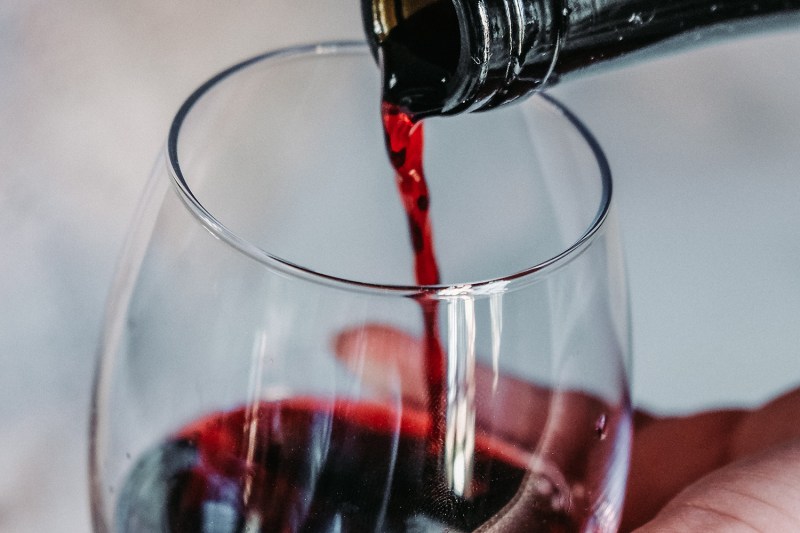Trust me, Virginia wine is coming. Not in droves, mind you, but here and there, on the shelves of your local bottle shop or on the list of your neighborhood’s most adventurous restaurant.
Here’s why: The state is presently at an intriguing crossroads. It’s been in the wine game long enough to know what works and, after many additional years of fine-tuning its treatment of the most suitable varieties, finds itself in a certain sweet spot. This is the fork in the road where labels decide to go for broke and appeal to the masses or continue the pioneering projects that got them to this very point (or some combination thereof).
Quite a few of the wines from the Commonwealth are good. Others, not so much. Perhaps more importantly, they’re fairly intrepid, just about across the board. In other words, while the region has achieved some noteworthiness among inner circles and at a few stray competitions, Virginia is not yet known for its wine (even though it produces the 8th most in the country). That translates to some freewheeling winemaking that can lead to interesting grapes and unexpected blends, all within a time frame wherein the state is still carving out its own, still-to-come legacy.

A lot of states we now know to be excellent wine outlets had similar phases — stretches of obvious emerging talent framed by a Wild West, DIY sort of sensibility. For consumers, it’s one of the coolest times to explore a region, as it typically lacks the crowds and commercialization that can come with fame. Some would argue that California had that in the 1970s and 80s, Walla Walla in the early aughts, and the Willamette Valley up until about a decade ago.
Presently, there are about 300 producers in the state and counting, pulling from about 4,000 acres of planted vineyard land. They exist all over the state, from the Blue Ridge Mountains to diverse valley floors and shorelines. Virginia’s wine history goes way back to the Founding Fathers era, when folk like Thomas Jefferson dabbled in the craft, with Jefferson even establishing his own estate vineyard (a pair of them at Monticello, in fact). The oldest wine grape planted in American soil, Norton, hails from Virginia.
Virginian winegrowers deal with their share of hardships. They come in the form of hot, humid summers and blisteringly cold winters. Picking times become crucial as moisture can cause rot and high temperatures can lead to over-ripening on the vine.
Every year since 1982, the state has put on what’s called the Governor’s Cup. Judged by a panel of wine pros, the tasting whittles down hundreds of entries made within the state to the top dozen Virginia wines. In 2019, some 510 wines were tasted from about 100 producers, all crafted from 100% Virginia fruit. The winning dozen included a mix of Bordeaux-style red blends (or “meritage” wines), Cab Franc, Tannat, and more.

Virginia Wineworks placed a remarkable five wines on the short-list. The overall winner; however, was a wine most people have never heard of, let alone tasted — a Petit Manseng from Horton Vineyards in Gordonsville, Virginia. The 2016 wine is full of intrigue, a white with real vigor and lasting flavor. The bone-dry wine is mostly barrel-fermented, affording it noticeable texture.
The grape itself hails from southwest France, a petite type known for both low yields and small berries. Legend has it that it was used to baptize royalty, including big-name historical figures like Henry IV (who has not one but two of his own Shakespeare plays). It’s commonly left on the vine late for dessert wine purposes but as this wine and a growing number elsewhere suggest, it can also make for a white table wine with plenty of spunk.

Not only is it cool that a white wine bested a bunch of reds, but it did so in worthy fashion. Label founder Dennis Horton was the first to plant the variety in Virginia back in 1999. He passed away last year, but not before unveiling the potential of this highly aromatic white grape. Those tired of Sauv Blanc, Viognier, or Pinot Gris will find renewed life in Petit Manseng. The good ones can be electric.
Other varieties gaining prominence in Virginia are Old World classics, but ones that often play minor roles in blends. Types like Petit Verdot and Cab Franc are released as standalone varietal wines or blended in such a way that they play leading roles in many bottlings. Look out for rising stars like Gamay, Chardonnay, and Rkatsiteli there, too.
It’s an exciting time for Virginia wine. If this year’s Governor’s Cup champ can provide any sort of look into the crystal ball, the picture will show at least a few more head-turning wines coming down the pipeline from this oft-overlooked mid-Atlantic state. It’s what the Founding Fathers wanted, after all.


